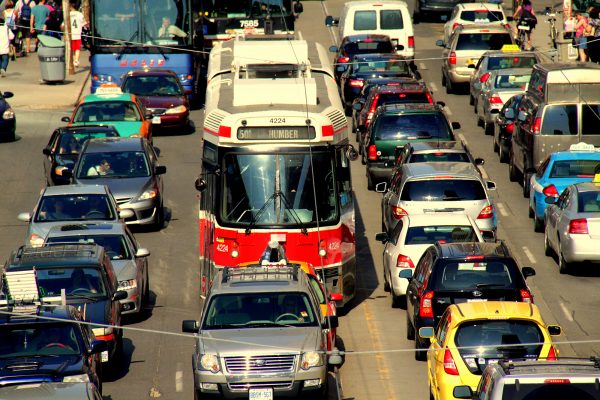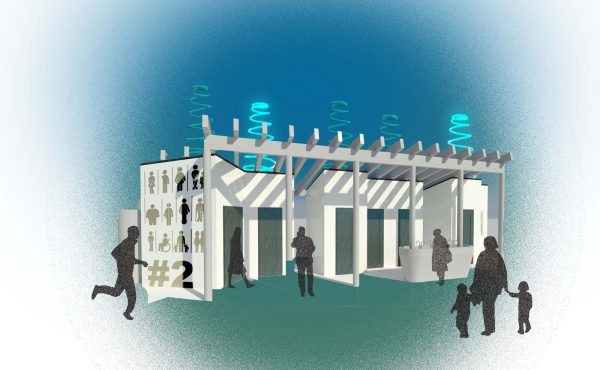It’s designed to be that way. We need to change that.
A common criticism of transit decision-making in Toronto is that it is overly politicized. Former TTC CEO Andy Byford famously told the Empire Club, “Toronto is the most political place I’ve ever worked,” as he spoke of the urgent need for more funding. When he announced his departure from the TTC (to head to New York), he lamented that “there’s been far too much transit planning in this city where facts haven’t been taken into account.”
Two weeks ago, the non-partisan transit advocacy group CodeRedTO released an important study comparing Toronto’s situation to transit in other cities in Canada and the United States. The report [pdf] gathered large amounts of data related to fares, budgets, networks and governance for both local and regional transit.
The main message of the report is that the TTC is desperately underfunded. We have the least subsidized agency in Canada and the US, and one of very few without an independent, dedicated source of funding for transit, such as a sales tax or gas tax.
Full disclosure: I am a member of CodeRedTO and helped with some of the research and writing of the report. I want to use this column to bring out a less urgent but still very important aspect of the research.
Toronto’s transit governance bodies are structured for maximum partisan political interference. Fixing them won’t solve all our problems, but we can certainly make changes that would improve the autonomy and accountability of these boards. This should, in turn, improve their decisions.
The funding issue is related to our governance problems, so it’s worth a few words on that first.
In other cities, dedicated sources of revenue like gas taxes are commonly in the range of $500 million to $1B. The most ambitious we’ve gotten is a half-hearted road toll proposal, which would have brought in $200 million per year, only part of which would have gone to transit.
Chicago is our closest comparator. It is of a similar size in terms of population and area, and its history of suburbanization is similar, too. The most significant difference in terms of transit is that Chicago grew earlier and they started building their system about 60 years before we did.
Toronto riders pay about the same fare as Chicago riders, but Chicago has twice the rail network. Chicago has eight lines of the elevated train, most of which are 17 km or longer, for a total of 169 km and 146 stops. We have two long lines, plus two stubs of the Sheppard and Scarborough RT. These total 78.6 km, with 75 stops.
(Chicago’s regional commuter rail system has almost twice the coverage, too: 785 km on 15 lines as compared to the GTHA’s 452 km on 7 lines.)
Although the Chicago and Toronto transit agencies have about the same revenue, the TTC carries almost twice as many people (unlinked trips).
In other words, we make our dollars stretch twice as far. It sounds efficient, but in practice, it looks like overcrowded buses, poor service and deferred maintenance.
All subsidies to the TTC account for 30% of its operating revenue, with fares covering the other 70%. For Chicago, fares contribute only 45% of operating revenue. Dedicated sales taxes and other subsidies contribute over $800 million to the CTA budget every year. No one has to ask or beg or justify.
Like all transit agencies, the TTC and GO Transit have governance boards, which are responsible for oversight of planning and fiscal management.
The TTC has a Board of Commissioners. It is comprised of seven elected City Council members and four citizen members. One of the city councillors serves as Chair. The membership is approved by City Council, but the councillor members and the Chair are effectively the mayor’s choice.
Although on paper the Board is independent of Council, in practice the mayor has extraordinary influence to set its agenda. This leaves the Board potentially vulnerable to projects whose purpose is more about getting votes than serving riders.
The positive side of the TTC Board’s structure is that the councillors, as elected officials, represent and are accountable to their constituents.
The Metrolinx Board, which oversees GO Transit, has no elected officials. Since its reorganization in 2009, its Board of Governors has up to 14 members (there are currently 11), all of whom are appointed by the Premier through an Order-in-Council. The legislature does not have to approve it.
The members are all accomplished people with strong profiles in the business community or the not-for-profit sector. With few exceptions, transit expertise is not prominent in their CVs. The Board does have gender parity (an improvement over the TTC’s Board) but no rider representation.
Despite Metrolinx’s mandate to coordinate transit and transportation to Toronto and within the GTHA, there is no required representation from Toronto or any of its neighbours.
People frequently wonder why we still haven’t solved the “fare integration” problem. Here’s a thought: we have no governance body that puts all the necessary stakeholders around the table to discuss solutions.
Toronto’s transit governance is weaker and more vulnerable to partisan politics than others. Other municipalities’ agencies have boards that are more diverse, more representative, and more than a political leader’s choice. Vancouver’s TransLink even has an independent screening panel for its appointees.
The current idea for governance “reform” is to “upload” ownership of the TTC’s subway system to the province. This is a step backwards and a misunderstanding of the problems we have.
The province’s current plan resembles what Baltimore is trying to get away from. The state of New York owns New York City’s subways, which are now in a “death spiral.” How could anyone look at the politics of transit in NYC and think, “I want that”?
Most transit agencies in Canada and the United States are independent. They don’t really “belong” to anyone, but they are clearly grounded in the cities they serve. They are established and funded by the state or province, as well as by dedicated tax revenue, but the higher order of government does not then try to own or run the local service. The funders are at the table so that transit dreams only go forward with realistic financing plans.
Board membership elsewhere usually includes a variety of involved stakeholders: various levels of government, representatives of all affected regions, business, community representatives, riders, paratransit users, and those with expertise in transportation and planning.
Chicago, for example, has a Chicago Transit Authority Board, with four members appointed by the Mayor of Chicago and three appointed by the Governor of Illinois. The Metra commuter rail has its own board with a diversity of regional representation. There is also a Regional Transportation Authority Board that includes further representation from neighbouring municipalities.
The Chicago boards are designed to enable the people who need to work together to do so. That does not mean they will always agree or that politics is absent from their discussions. It does improve the chances that they will collaborate and make effective decisions.
We can strengthen decision-making structures to make them less vulnerable to partisan interference. Open up the appointment process. Make better use of civil society expertise. Include rider representatives. Include provincial representation on the TTC board, and representation from the City of Toronto and its neighbours on the Metrolinx board.
Most importantly, give those boards the independence they need—including reliable, dedicated funding—to make good and responsible decisions.
We can’t eliminate politics from transit decision-making—and we shouldn’t want to. We need democratic oversight and accountability. What we don’t need is partisan political interference that has nothing to do with evidence, especially when that interference is in support of projects that drain limited resources away from better ones.
Toronto has a successful local transit system that needs protection and investment. We should put governance structures in place that will help us achieve that.
*This column has been updated to correct figures for Toronto’s local rail system.





4 comments
Thanks for laying this out, people have their heads in the sand way too much and don’t want to hear entirely relevant information about how other cities handle transit. Metrolinx and the TTC can be guaranteed to pretty much always make the wrong decision, and much of that is due to allowing politicians anywhere near transit planning.
With some respect, it goes way beyond (or should) how the transit is funded, administered and new options chosen. The transit budgets are usually in one document/area, but the subsidies to the private car are buried throughout multiple budgets, and those cumulative subsidies/externalities can dwarf what transit costs. We are simply too carservative and/or carrupt (often including media) to get these truths out there, and the core area of density where transit is often better is usually/often out-voted by the car-dependent suburbs, and yes, there’s reason for liking cars in lower-density areas. So will the new Council bring in the Vehicle Registration Tax?? Or will it keep on giving the freebies to the votorists and bleed the core while stifling its representation? Odds are the latter; desulTory….
Toronto’s subways are more intensively used, by a wider range of the population, than Chicago’s. And our streetcars and buses are better integrated into the subway stations. Nonetheless Toronto transit can be greatly improved. TTC problems stem from politicians taking it for granted and under-investing in its maintenance, as well as building subway extensions to low density sprawl. Fortunately sufficient people and businesses have stepped up to state that the Relief Subway Line is the top priority – not the Scarborough Subway Extension and SmokeTrack.
I would add that there should be worker representation on the TTC Commission. The people that operate and maintain the system have detailed and valuable experience that should be considered in transit decision making.